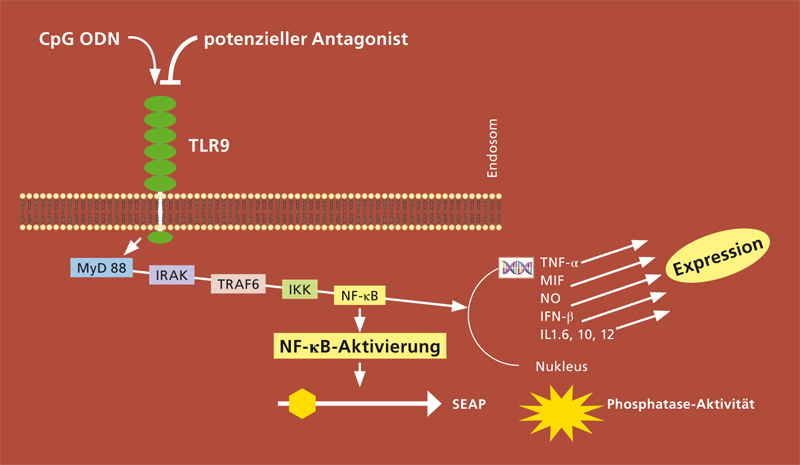The receptors of the innate immune system recognize not only conserved molecular patterns of infectious pathogens, but also isolated chemical structures (PAMPs, pathogen-associated molecular patterns), and are referred to as pattern recognition receptors (PRRs) [1]. Among the PRRs, the toll-like receptors represent the largest and most well-known family. Stimulation of the TLRs leads, via the activation of various signal cascades and transcription factors, to the production of pro-inflammatory cytokines and thereby plays a significant role in the development of pathological processes in acute and chronic diseases in humans [2].
Agonists and antagonists of TLRs are therefore a new therapeutic approach for immunotherapy by using them as immunomodulators. Agonists stimulate the innate immune system and are frequently used as adjuvant drugs, while antagonists inhibit inflammatory processes [3]. The possible spectrum of indications ranges from allergies, infections and tumors, up to autoimmune diseases. It is the aim of an international project at the IGB to seek out new TLR antagonists/agonists, in order to be able to treat inflammatory reactions and allergies.
 Fraunhofer Institute for Interfacial Engineering and Biotechnology IGB
Fraunhofer Institute for Interfacial Engineering and Biotechnology IGB

